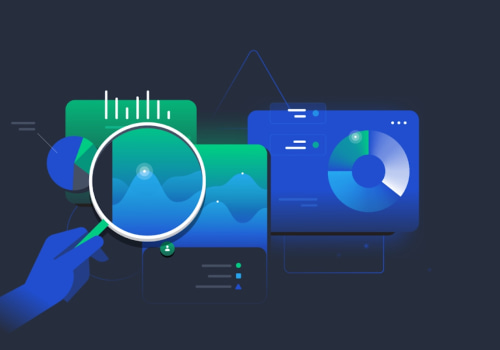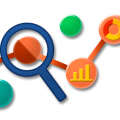Gaining skill in common data visualization techniques can help you reap the benefits of data-driven decision-making, including greater confidence and potential cost savings. Learning to effectively visualize data could be the first step in using analytics and data science to your advantage to add value to your organization. Several data visualization techniques can help you be more effective in your role. These are 17 essential data visualization techniques that every professional should know, as well as tips to help you present your data effectively.
There are a lot of different techniques and tools you can take advantage of to visualize your data, so you'll want to know which ones to use and when. Here are some of the most important data visualization techniques that every professional should know:. Pie charts are one of the most common and basic data visualization techniques and are used in a wide range of applications. Pie charts are ideal for illustrating proportions or comparisons between parts and totals.
Because pie charts are relatively simple and easy to read, they are more suitable for audiences that may not be familiar with the information or are only interested in key findings. For viewers who need a more detailed explanation of the data, pie charts aren't capable of displaying complex information. The classic bar chart, or bar chart, is another common and easy-to-use method of visualizing data. In this type of visualization, one axis of the graph shows the categories being compared and the other, a measured value.
The length of the bar indicates how each group measures according to the value. One drawback is that labeling and clarity can be problematic when too many categories are included. Like pie charts, they can also be too simple for more complex data sets. Gantt charts are particularly common in project management, as they are useful for illustrating a project schedule or the progression of tasks.
In this type of graph, the tasks to be performed are shown on the vertical axis and the time intervals on the horizontal axis. The horizontal bars in the body of the graph represent the duration of each activity. Using Gantt charts to show schedules can be incredibly useful and allow team members to track all aspects of a project. Even if you're not a project management professional, familiarizing yourself with Gantt charts can help you stay organized.
A heat map is a type of visualization used to show differences in data through color variations. These graphics use color to communicate values in a way that makes it easier for the viewer to quickly identify trends. It is necessary to have a clear legend for the user to correctly read and interpret a heat map. There are many possible applications of heat maps.
For example, if you want to analyze what time of day a retail store sells the most, you can use a heat map that shows the day of the week on the vertical axis and the time of day on the horizontal axis. Then, by shading the matrix with colors that correspond to the number of sales at each time of the day, you can identify trends in the data that allow you to determine the exact times when your store is experiencing the most sales. A box and mustache diagram, or box diagram, provides a visual summary of the data through its quartiles. First, a box is drawn from the first quartile to the third quartile of the data set.
A line inside the box represents the median. Outliers are represented by individual dots that are in line with the whiskers. A waterfall chart is a visual representation that illustrates how a value changes as it is influenced by different factors, such as time. The main purpose of this graph is to show the viewer how a value has grown or decreased over a defined period.
For example, waterfall graphs are popular for showing expenses or profits over time. Depending on the data visualization tool you use, you may be able to add conditional formatting rules to the table that automatically color cells that meet specific conditions. For example, when using a highlight table to visualize a company's sales data, you can color the cells red if the sales data is below the target or green if the sales were above the target. Unlike a heat map, the colors in a highlight table are discrete and represent a single meaning or value.
Data visualization is the graphical representation of information and data. Using visual elements such as tables, graphs, and maps, data visualization tools provide an accessible way to see and understand trends, outliers, and patterns in data. In addition, it provides an excellent way for employees or business owners to present data to non-technical audiences without confusion. The pie chart is one of the most basic and well-known techniques for data visualization.
It's very simple and easy to understand. It is a circular statistical graph that involves pieces to clarify numerical quotients. Thus, here the size of the arc of each piece is equal to the quantity indicated. Data visualization methods refer to the creation of graphic representations of information.
Visualization plays an important role in data analysis and helps to interpret big data in a real-time structure using complex sets of numerical or factual numbers. Big data visualization often goes beyond the typical techniques used in normal visualization, such as pie charts, histograms, and corporate graphs. Instead, it uses more complex representations, such as heat maps and fever graphs. Visualizing big data requires powerful computer systems to collect raw data, process it, and convert it into graphic representations that humans can use to obtain information quickly.
As data visualization providers expand the functionality of these tools, they are increasingly being used as interfaces for more sophisticated big data environments. Like any business activity, from brand storytelling to digital selling and more, with the visualization of your data, your efforts are as effective as the strategy that underpins them. This method of visualizing data is useful for showing changes in one or more quantities over time, as well as for showing how each quantity is combined to form the whole. This type of graph is useful for quickly identifying whether the data is symmetric or biased or not, as well as for providing a visual summary of the data set that can be easily interpreted.
With the seemingly endless data flows available to today's companies in every sector, the challenge lies in interpreting data, which is the most valuable information about the individual organization, as well as about its long-term goals, goals and objectives. .











